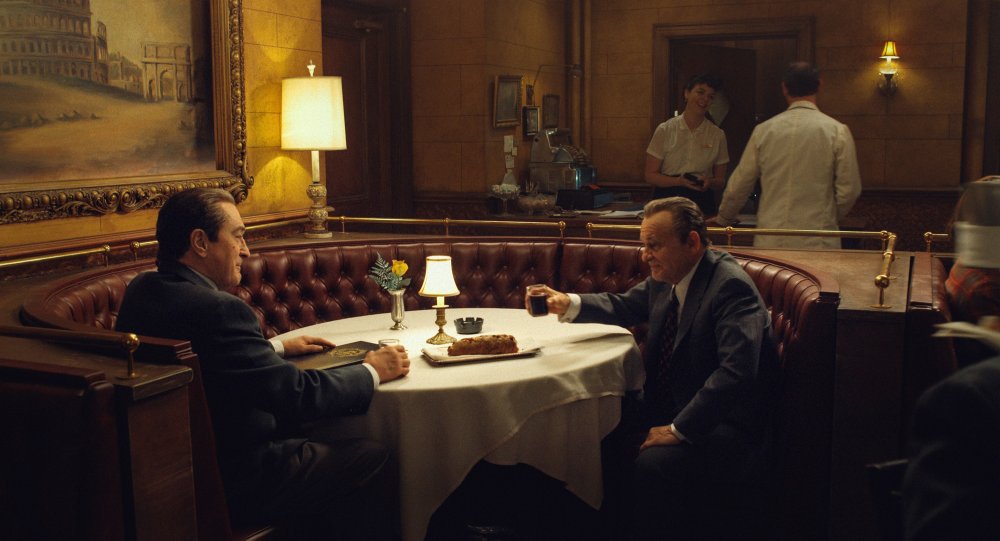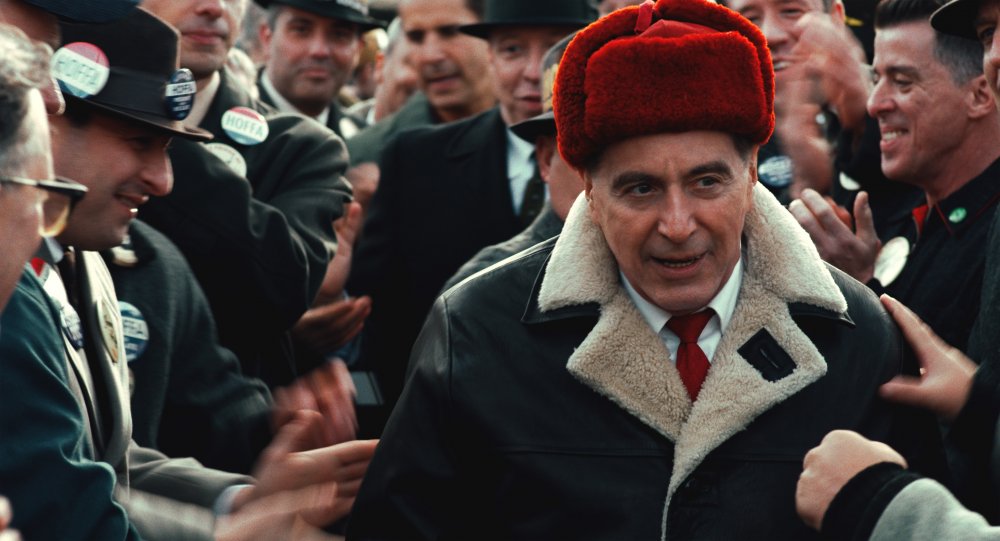Martin Scorsese: digital de-ageing could replace make-up
The Irishman sees Martin Scorsese re-uniting with his old star Robert De Niro to tell the story of Frank Sheeran, a World War II soldier turned mafia fixer who was assigned to handle relations with the powerful union boss Jimmy Hoffa (played by Al Pacino) and later claimed responsibility for Hoffa’s disappearance and death.
For our November 2019 issue, Scorsese sat down with Philip Horne for a generous three-and-a-half-hour interview covering mob culture, power and politics, his history with Al Pacino, why he made the film for Netflix, what he learned from his Bob Dylan documentaries and much more. One revelatory topic was the filmmakers’ groundbreaking work with digital ‘youthification’ technology to allow De Niro and his fellow septuagenarians to play their characters across 50 years of American history.
In the section of the interview excerpted below, Scorsese explains the fine details of facial analysis and animation that he, his editor Thelma Schoonmaker and the visual effects team led by Industrial Light & Magic’s Pablo Helman found was required to preserve the actors’ performances and emotions as the de-ageing technology rolled back the years from their faces. Given more practice and perfection, could this – rather than “prosthetics and that sort of thing” – become the standard for telling film stories that cross the decades?
Philip Horne: About the use of ‘youthification’ in the film. You were quoted as saying at an earlier stage, when I think you weren’t happy with the first version, “Does it change the eyes at all?”
Martin Scorsese: That’s the second time I’ve heard that as if it was a negative thing. Actually not.
What I was saying was: “That’s the job, that’s what we have to do.” In other words, you keep the eyes, but even if you keep the eyes, there’s much more to that: there’s the crow’s feet, there’s the bags under the eyes, there’s the eyebrow. There’s the way the light hit. So every frame you see, there’s infinitesimal work that’s been done. Ultimately, it’s about the performance and about the character.
I knew the sort of picture it has to be. I said, “I can’t have the actors, these actors, with mechanical objects on their heads” because they’re not going to do it, it gets in the way.
 But then Pablo came back to me and said, “I think I’ve figured a way.” And he made the… I guess they’re called contacts; little pieces of fabric or something that really were invisible. And you know, you could be wearing it like, round here [indicates his face], and at a certain point you’re talking to a person, you’re not talking to a machine.
But then Pablo came back to me and said, “I think I’ve figured a way.” And he made the… I guess they’re called contacts; little pieces of fabric or something that really were invisible. And you know, you could be wearing it like, round here [indicates his face], and at a certain point you’re talking to a person, you’re not talking to a machine.
The challenge, as they say these days, was to take those elements and keep the person, not lose them in something that is cleaned up. It’s really about keeping that character, keeping those emotions and their faces alive.

In one scene where De Niro’s younger, for example, and he’s talking to some people and he has to convey a kind of vulnerability and a haplessness – making him younger, a couple of times we noticed, made him look like he was threatening them.
Now why’s that? The line around the mouth. So, let’s go into the mouth, work on that.
A week later they bring it back. “No, it still looks like he’s threatening.” Well, maybe the eyes have to be fixed – around the eyes.
I’m going for what the performance is. Ultimately, we felt that we regained through the youthification process the vulnerability in that moment.
 |
| Martin Scorsese, Robert De Niro, Joe Pesci and Al Pacino |
So it makes you look very closely at the actual way that facial expressions work?
Yes, at every aspect of the face. And then of course as the actor moves in the frame, the light changes. So a few frames this way – you’ve got to put some texture here… and so you’re really creating, recreating, the performance, in a way, with the basic truthful elements of the actor, and protecting those.
We stumbled through that. We said, “What about trying this? What about that?” It would come back a week later, we would say, “It looks a bit funny here, or there.” And so we’d go back. We did that with every shot, with Joe Pesci and with Al too. It’s a learning experience.

Al Pacino as Jimmy Hoffa
In a way, I look at it as… well, there’s the convention in cinema of the use of make-up. If you look at an older film, there was an acceptance by the audience where the hair is powdered, or you know that that’s make-up and that the moustache is fake. But you went with the illusion.
I always remember the great Dick Smith, and the old-age make-up he made for [Dustin Hoffman’s 121-year-old character in] Little Big Man [1970]. Or the make-up in The Elephant Man [1980]. Where’s the heart? Where’s the performance? It’s there, because John Hurt was great. But I know that’s make-up, so as a viewer I go with the illusion. I give you something back so I can get something from the world that you’re trying to depict for me and the characters.
It’s another level of that, I think. And ultimately, it might be superior in the long run, to creating an illusion. Rather than having to apply prosthetics and that sort of thing. Mind you, we did a great deal of make-up on the film too.
Do you think this system will have an effect on other films that are made?
I think so. Obviously, it may have an effect on films that are trying to create more of a futuristic world. But it’s as good as the people doing it, really. Pablo and his group and ILM were amazing; and we were – myself and Thelma – on them to work in the slightest, the most scrupulous way.
One of the key things was, I didn’t want to make a film dealing with this subject-matter, and this character – and where we were taking him, to the very end – and have half the film working with younger actors that were supposed to be Bob, supposed to be Joe, and supposed to be Al. I just didn’t.
And so you may find that now that’s something that is doable: actors playing themselves younger – or older. This is a first time and there is an element of cost. But I think the more it’s used, the more the cost will become reasonable.







No comments:
Post a Comment